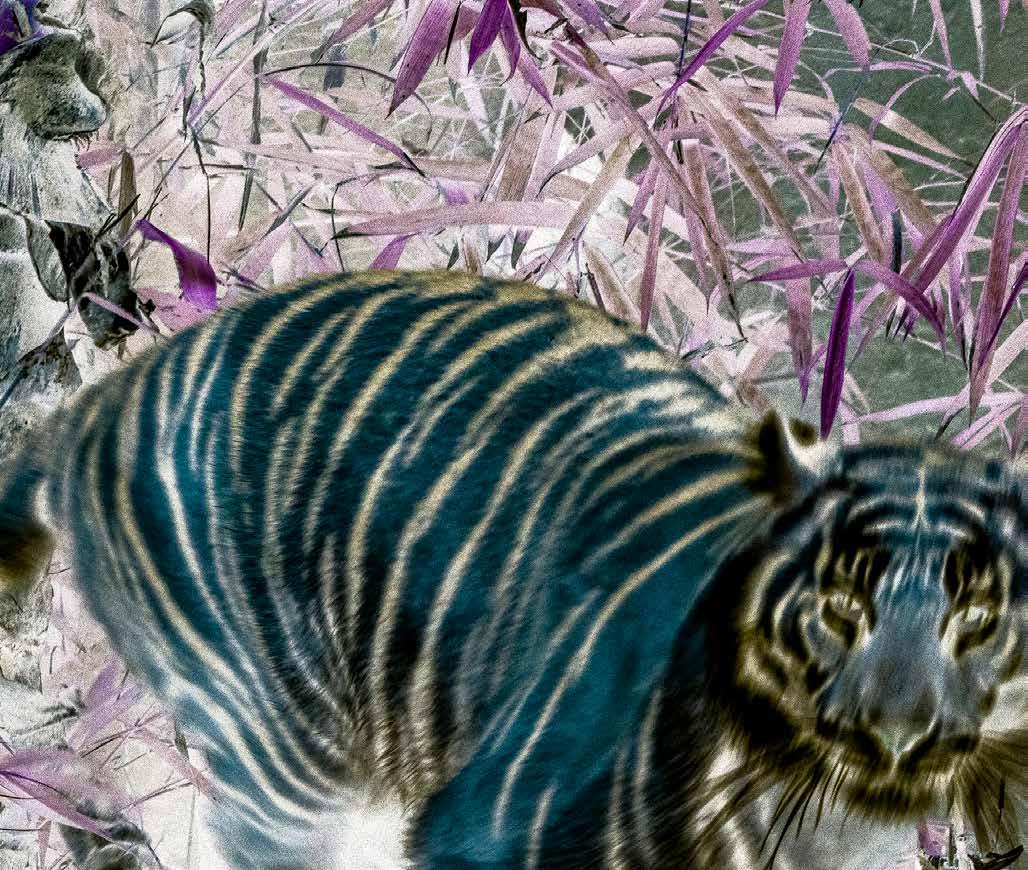Wild Temper

 Itamar Freed & Kristina Chan William Morris
Itamar Freed & Kristina Chan William Morris


 Itamar Freed & Kristina Chan William Morris
Itamar Freed & Kristina Chan William Morris
Litvak Contemporary, September 2022
Participating artists: Itamar Freed & Kristina Chan, William Morris
Curator: Hadas Glazer
Catalogue editors: Orit Ephrat-Moscovitz, Hadas Glazer Design: Moria Bachar
English translation: Sivan Raveh

Text editor: Sivan Raveh Photography: Youval Hai (Installation images); Robert Vinnedge (William Morris)
Measurements are given in centimeters, height x length
Litvak Contemporary
3 Shvil Hamifal Street, Tel Aviv 66535, ISRAEL +972-3-7163897 www.litvakcontemporary.com
© 2022 All rights reserved to Litvak Contemporary, Tel Aviv
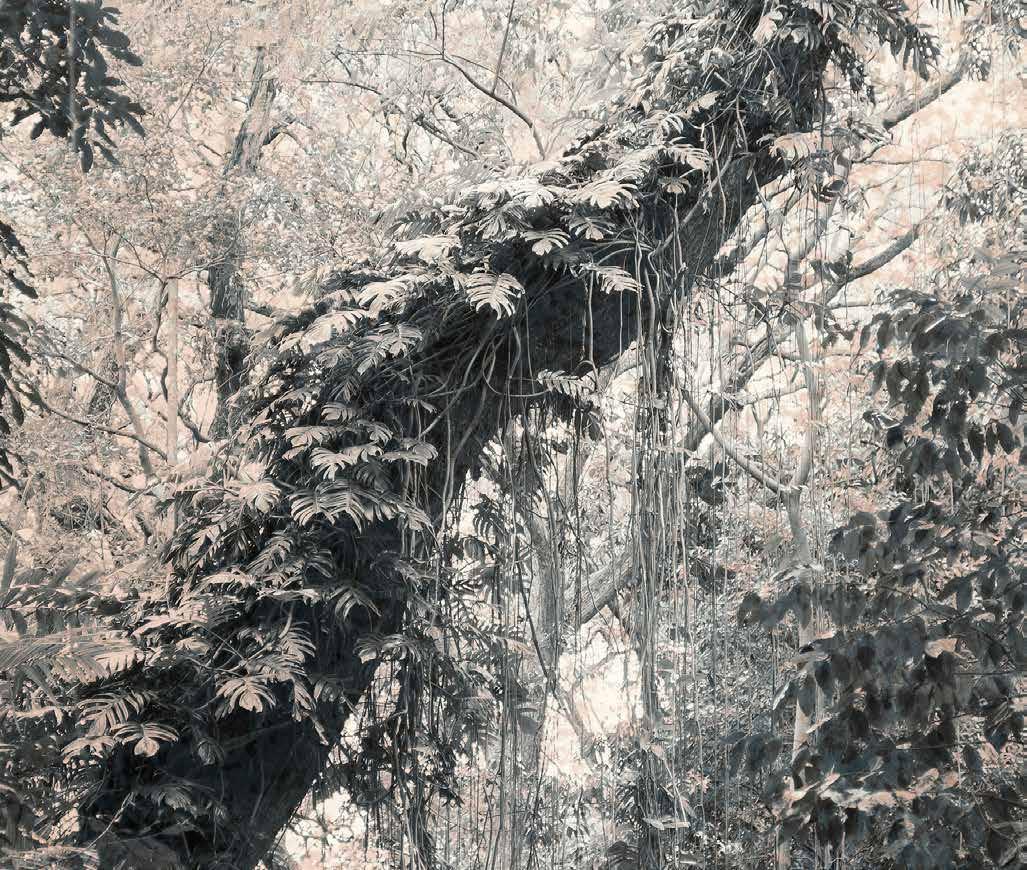
Itamar Freed and Kristina Chan have been working together as a creative duo since 2018. Freed has a background in photography, Chan in printing. Their works deal with the processes that occur in nature and on the relation between culture and nature, depicting images that range from the realistic to the fantastic. On a wide platform in the center of the gallery lies the sculpture Man and Beast by the American glass artist William Morris.
Freed and Chan begin from a photographic viewpoint. Seemingly, their photographs are clear and direct, allowing the eye to recognize the objects it encounters: a tree, tiger, horses, peacock, the jungle – yet in fact, it sees an illusion: the tree isn’t a tree, the jungle isn’t there. The nature appearing before us is a seductive, manipulated and processed image. As in all photography, the occurrences captured by the camera form the basis of the image, yet they also serve as fertile ground for modification and intervention. The photographs on display aren’t a documentation of nature but present an interpretation of representations of nature, the elasticity of the image and the ways in which different cultures approach nature.
The sites and references of the photographs are important for reading the works. They link the dichotomous terms
East and West, wild and tamed, balanced and tempestuous. Several of the photographs show remote nature reserves, in which nature runs wild and thick, while others present places in which nature is organized by culture, such as zoos or botanical gardens. The artists rely on traditional Japanese aesthetics, as in the reference to the cherry tree blossom on the almond tree, which became an Israeli symbol. The photographs also refer to iconic European artworks, such as George Stubs large-scale horse painting Whistlejacket, displayed at the National Gallery in London.
The combination of photography methods and experimental printing techniques and the use of varied sources of inspiration create a unique aesthetic. It raises questions on the evolution of the link between cultures and the nature surrounding them and the multifaceted way in which they represent it – radiant, fantastic, mysterious, yet also conquered and tamed. Earthly and transcendental.
Humans are absent from the photographs, yet it is the human point of view that creates them, the power balance and the contradiction in people’s attitude to nature: on the one hand, a yearning and desire to preserve nature; on the other, a will to overcome nature and subject it to human perspectives.
The only human figure in the exhibition appears in William Morris’s Man and Beast. In his work, Morris links together prehistorical, sculptural and museology notions, placing at their foundation themes such as natural cycles, human impulses and spiritual elevation. Morris claims that while a person’s relation to nature is constantly assessed, it nonetheless remains complex and mysterious. The sculpture in the exhibition depicts a mammal and a human skeleton. The animal is created of milky bones whereas the human remains are transparent and clear. The fragile relics evoke an ambiguous narrative, yet the story is obscure: did the man intend to kill the animal but was himself killed instead? Did the animal attack the man before dying from his attempts to protect himself? Perhaps they fed on the each other’s body?
Combining the works into one exhibition creates another dimension – existential, energetic, cosmic – a dimension that goes beyond questions of representation, documentation and interpretation; a dimension that seeks to stand in awe before the works, to discover their primal source of energy, to look and contemplate: is that a tree, a tiger, horses, peacock, the jungle? Is that an animal? A person? Human thought, which turns natural forces into symbols, moves beyond the fields of botany and zoology, allowing the gaze to turn and enter.
Wild Temper is an exhibition on duality, one also evoked in its title. The phrase “wild temper” works against our expectations from people: to be civilized, to belong, to accept social conventions – traits that work against untamed, wild nature. A wild temper therefore embodies the nature-culture duality. The various forms of dialogue/ contradiction are also expressed by several pairings: Freed and Chan, who together create a unified body of works, the human and the animal in Morris’s sculpture, and the diptychs. Each coupling presents dialogue and tension and thereby conjures thoughts on creating links and contexts, on the dualism and dichotomy implicit in the notions of “nature” and “culture,” and perhaps also the possibility, so glaringly apparent here, of blurring the boundaries between artificial terms.
Itamar FreedItamar Freed (born in Manhattan, 1987) lives and works in Brisbane, Tel-Aviv and London. His work has been showcased in solo and group exhibitions worldwide, including Haifa Musuem of Art, Ramat Gan Museum of Art, Museum of London, Royal Academy, London; NordArt, Büdelsdorf; Royal Photographic Society, Bristol; Beers Gallery, London; FireWorks Gallery, Brisbane; RCA, London; Hancock Gallery, Newcastle.
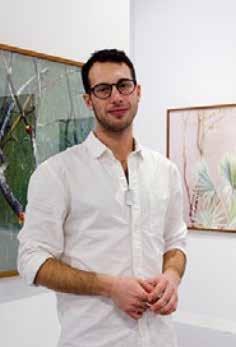
In 2019 he participated in Airie Artist in Residence Creative Spaces, Florida, USA, and in 2017 he participated in the BigCi artist residency, Sydney, Australia
Freed holds a B.F.A from the Bezalel Academy of Arts and Design, and in 2018 he graduated his M.F.A in Photography from the Royal College of Arts, London. His work has also been recognized by a grant from the Clore Bezalel Scholarship for MFA degree in the Royal College of Art in 2016.
Among the many awards he has received are the Travers Smith 2021/2022 CSR Art Awards Alumni Artist (with Kristina Chan), London; Beers Gallery Summer Marathon 2020, London; “EPSON” first prize for excellence in the art of photography, 2012.
Freed’s works are included in numerous private collections worldwide as well as major public collections such as Lauren and Mitchell Presser Photography Collection, USA; The Estee Lauder art collection, USA; The Clore Collection, London, UK, the USA State Department Collection, USA, and other private collections in Israel and abroad.
Kristina ChanKristina Chan (born in Vancouver 1991) lives and works in London. Her work has been showcased in solo and group exhibitions worldwide, including the Lightbox Museum, Woking, UK; Hancock Gallery, Newcastle; KoMask Master Printmaking Salon at Royal Academy of Fine Art, Antwerp Frestonian Gallery, London; Project 88, Mumbai; and Espace Barrell, Paris; Louvre Museum, during the 5th Annual Exposure Award Black and White Collection; Offprint TATE at TATE Modern; Museum für Moderne Kunst Bremen; Mindepartementet Museum, Stockholm; Litvak Contemporary, Tel Aviv.
Chan holds a B.F.A from Parsons Paris School of Art and Design, and in 2016 graduated with distinction the MA in Print at the Royal College of Arts, London.

Chan’s works are included in numerous private collections worldwide as well as major public collections such as The Royal Collection, Clarence House, Private Collection of His Royal Highness Prince of Wales, UK; Victoria & Albert Museum, Permanent Print Collections, London, UK; Royal College of Art, Print Archives, London, UK; Edinburgh Print Archives, UK; Shanghai Institute for Visual Arts, Print Archives, Shanghai, China; Parsons Paris Institute of Design, Alumni Archives, Paris, France; Parsons The New School, New York, USA.
Among the many awards Chan has received the 2022 Travers Smith CSR Awards, Alumni Category for works co-created with Itamar Freed; 2021 Canada Council for the Arts Explore & Create Project Grant, Canada; 2020 Ingram Prize, London, UK; 2018 Elizabeth Greenshields Foundation Project Grant, Montreal, Canada; 2017 Edinburgh Printmakers Award, Edinburgh, UK and more.
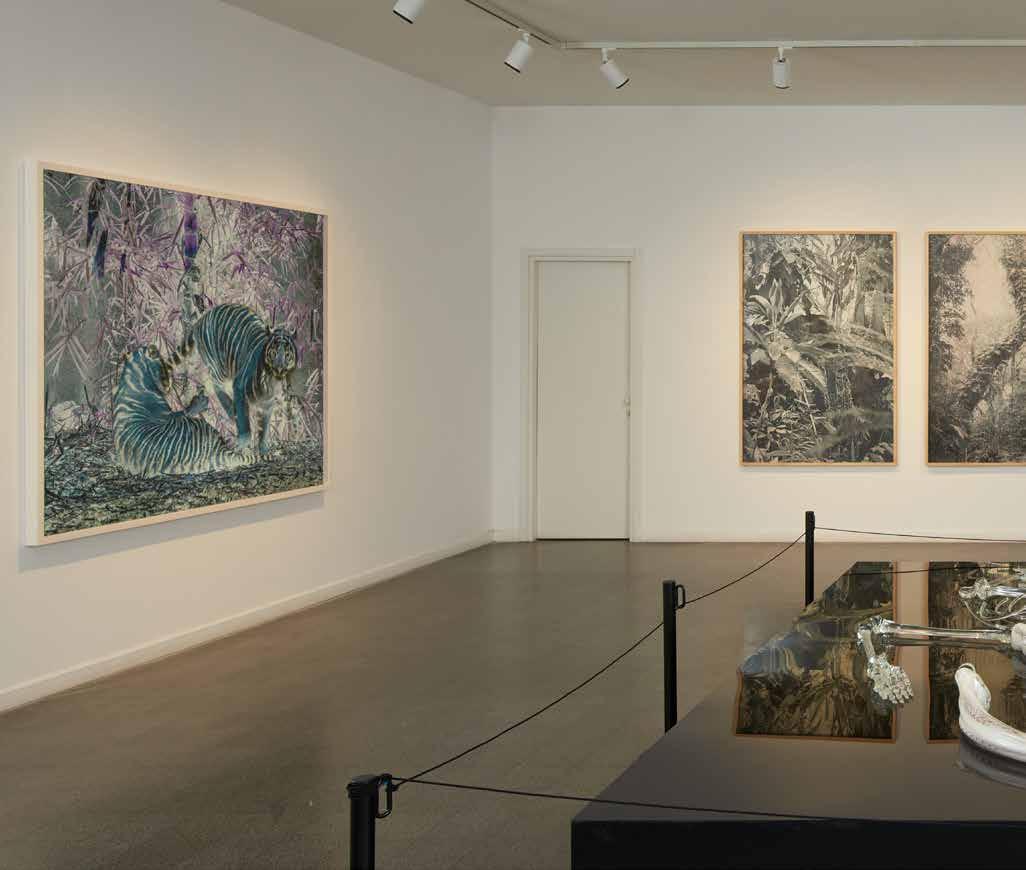
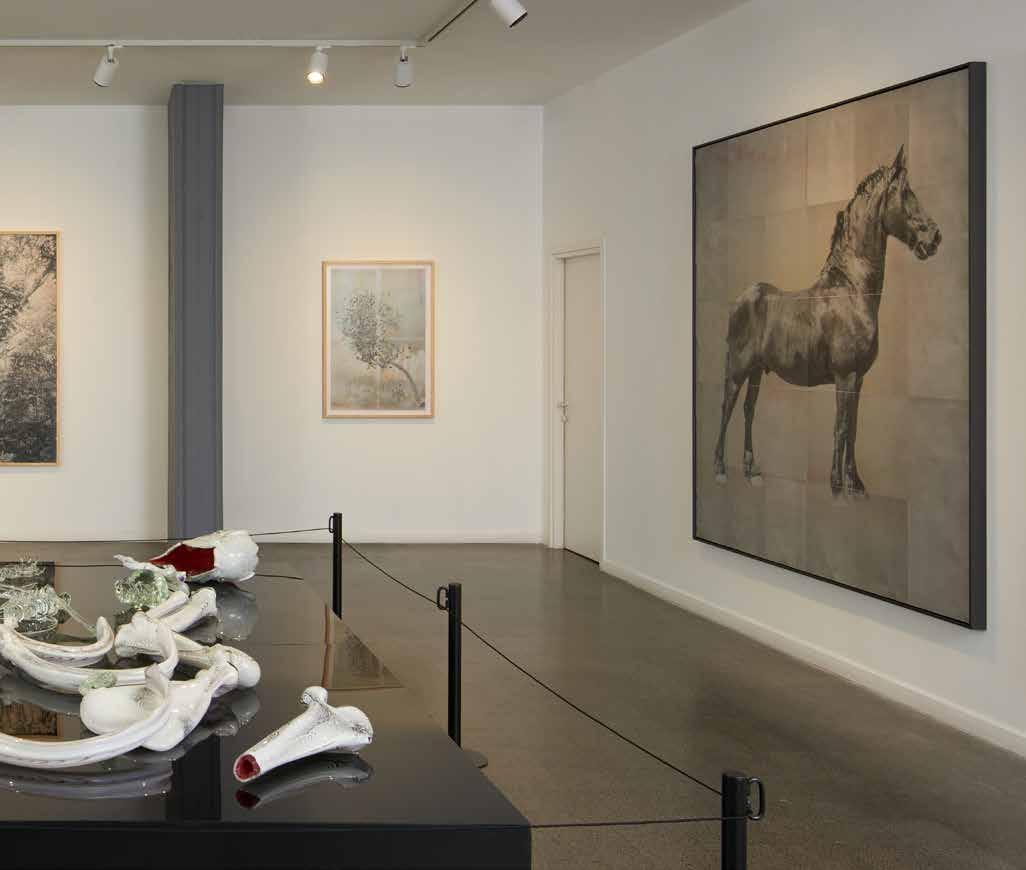
Blue Tigers, 2022 Ed. 1/3 C-type print on archival paper 155 x 186.8


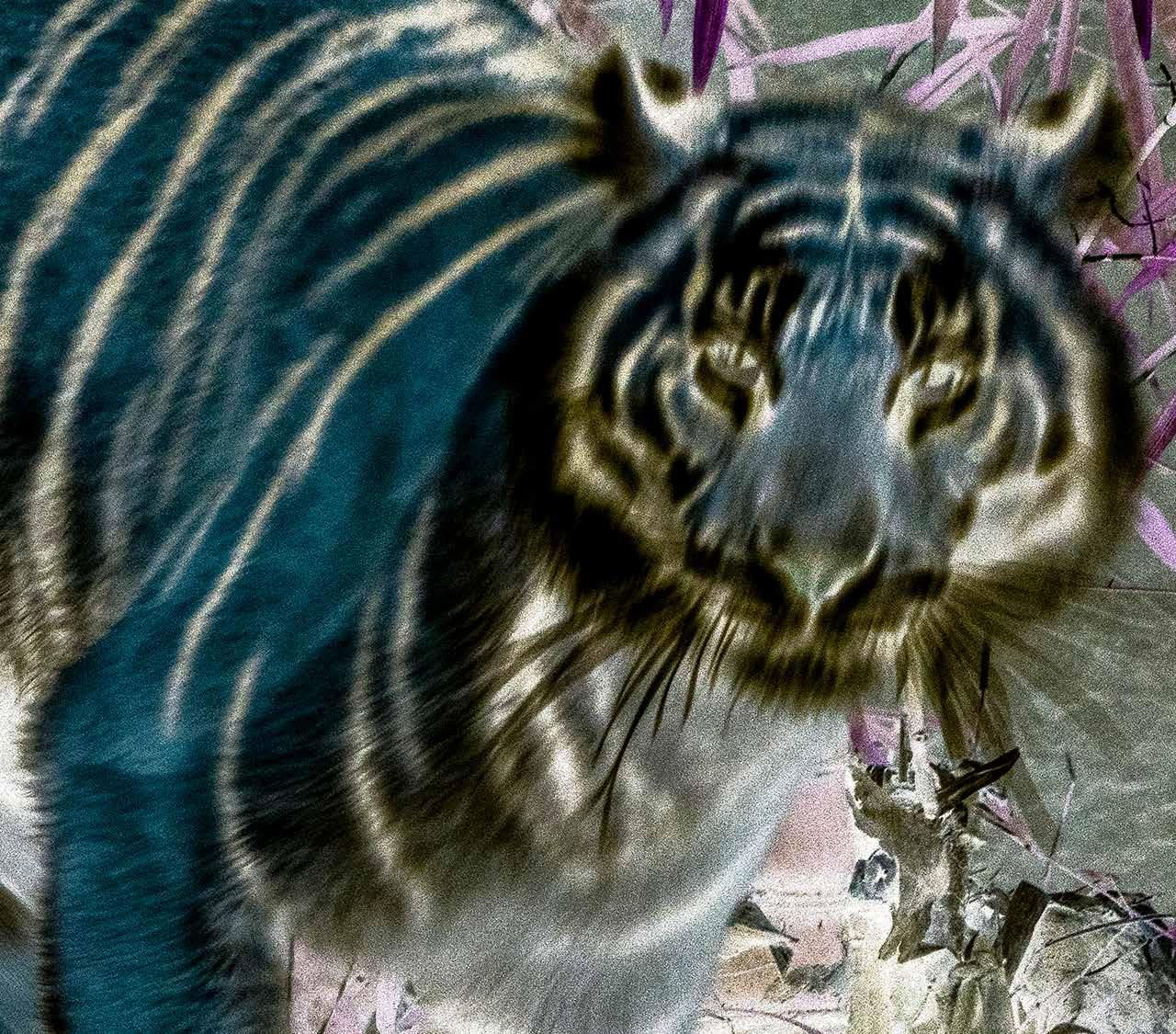

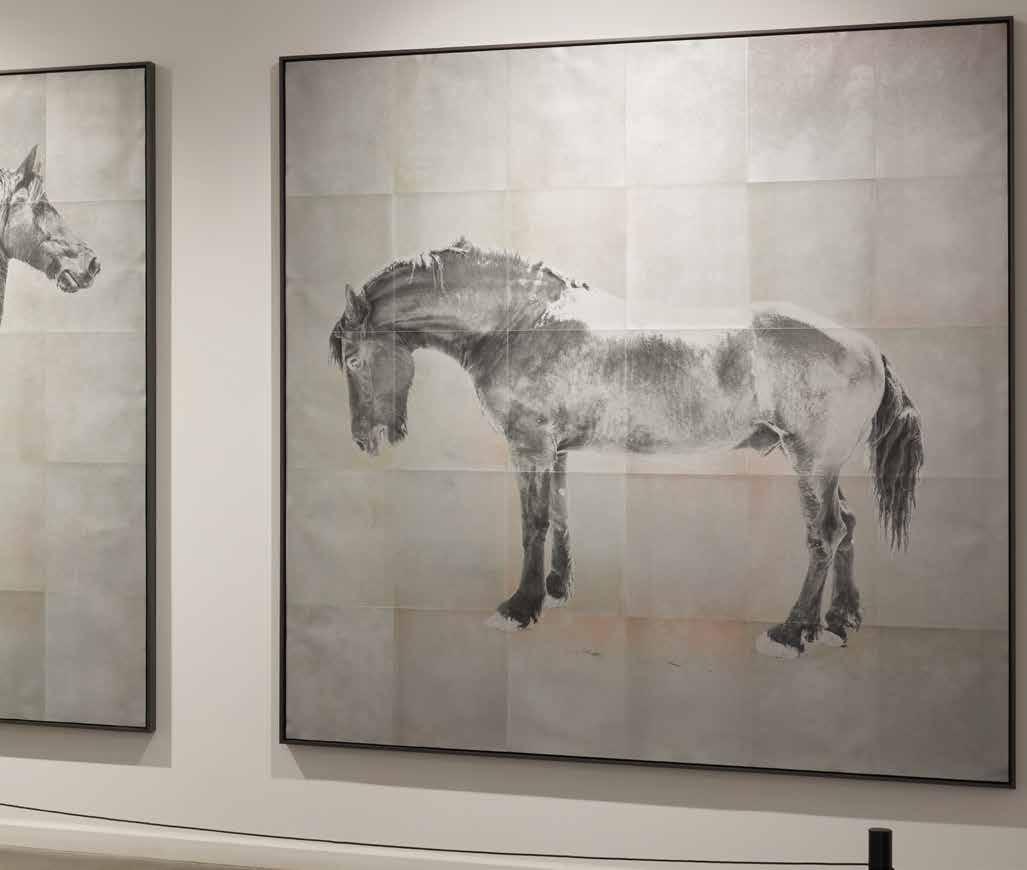

Horse 1,
Multimedia: Lithographic mono print with stencilling 195.4 x 207.6
Multimedia: Lithographic mono print with stencilling 195.4 x 207.6


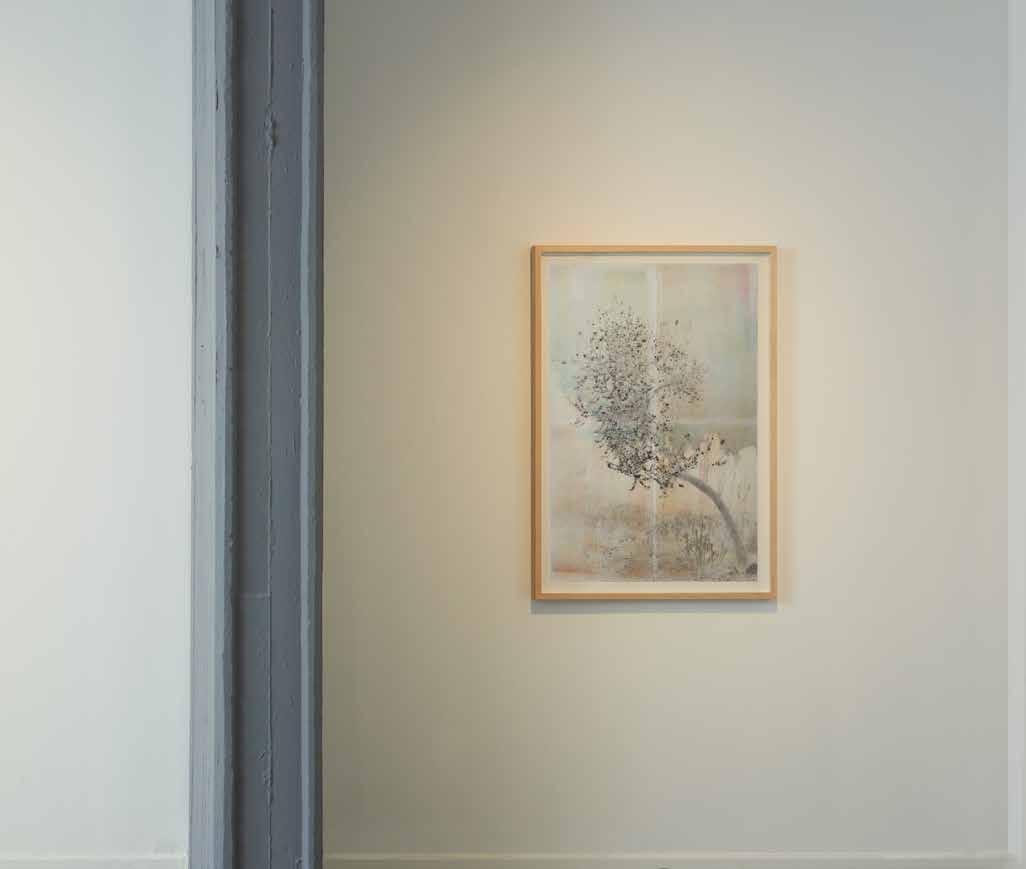
Multimedia:
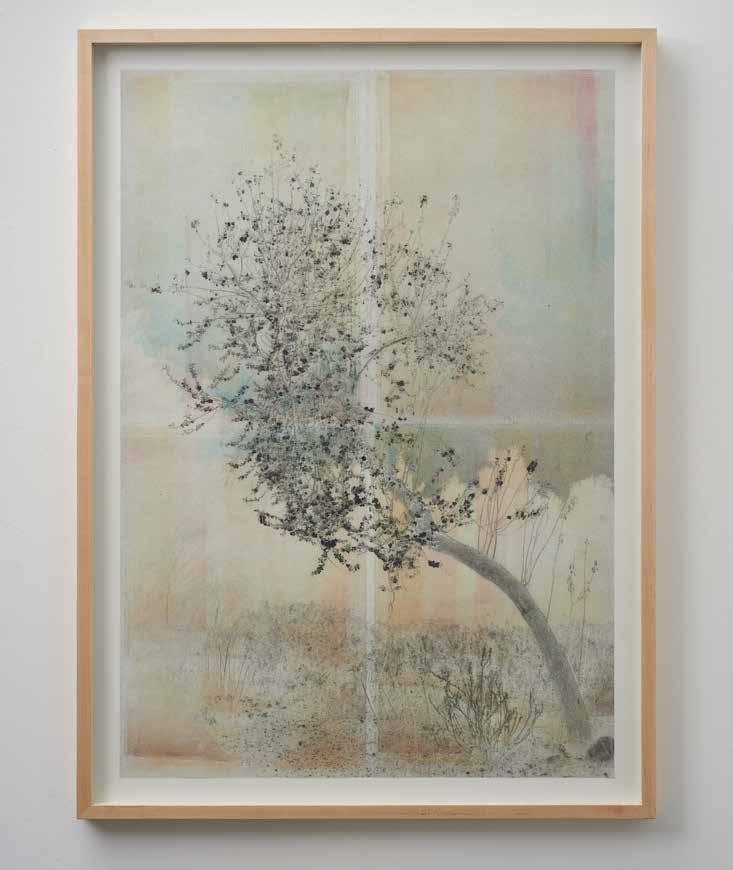
Inquire Far North, 2022 Ed. 1/3
Pigment print on archival Japanese paper

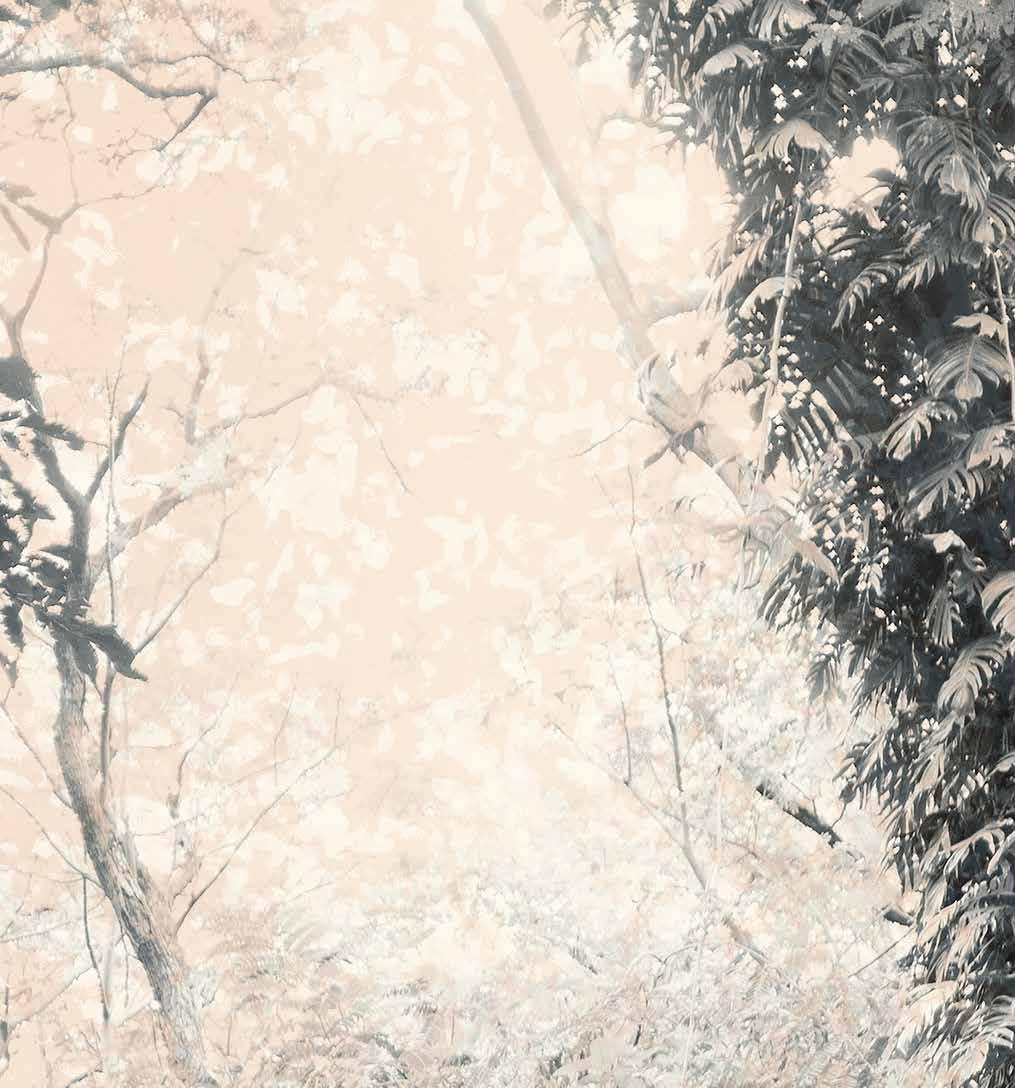

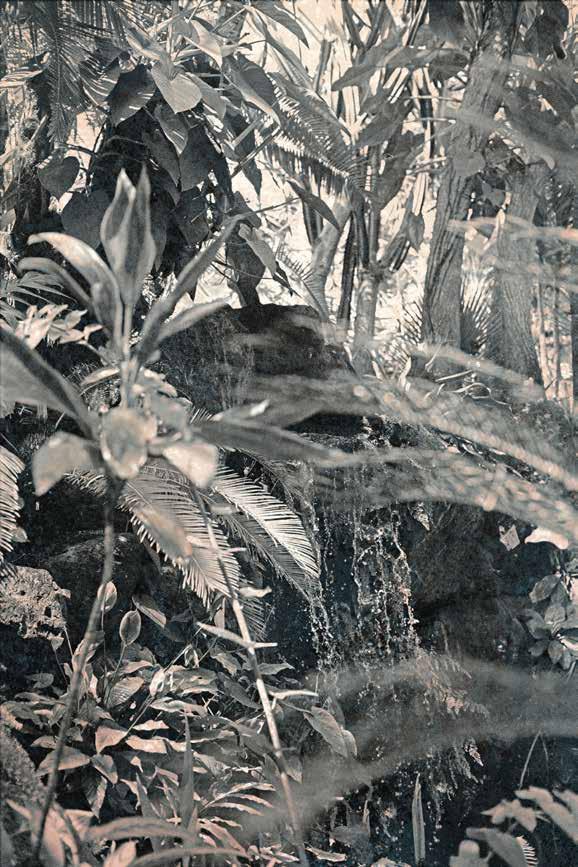
Inquire
Far South, 2022 Ed. 1/3
Pigment print on archival Japanese paper
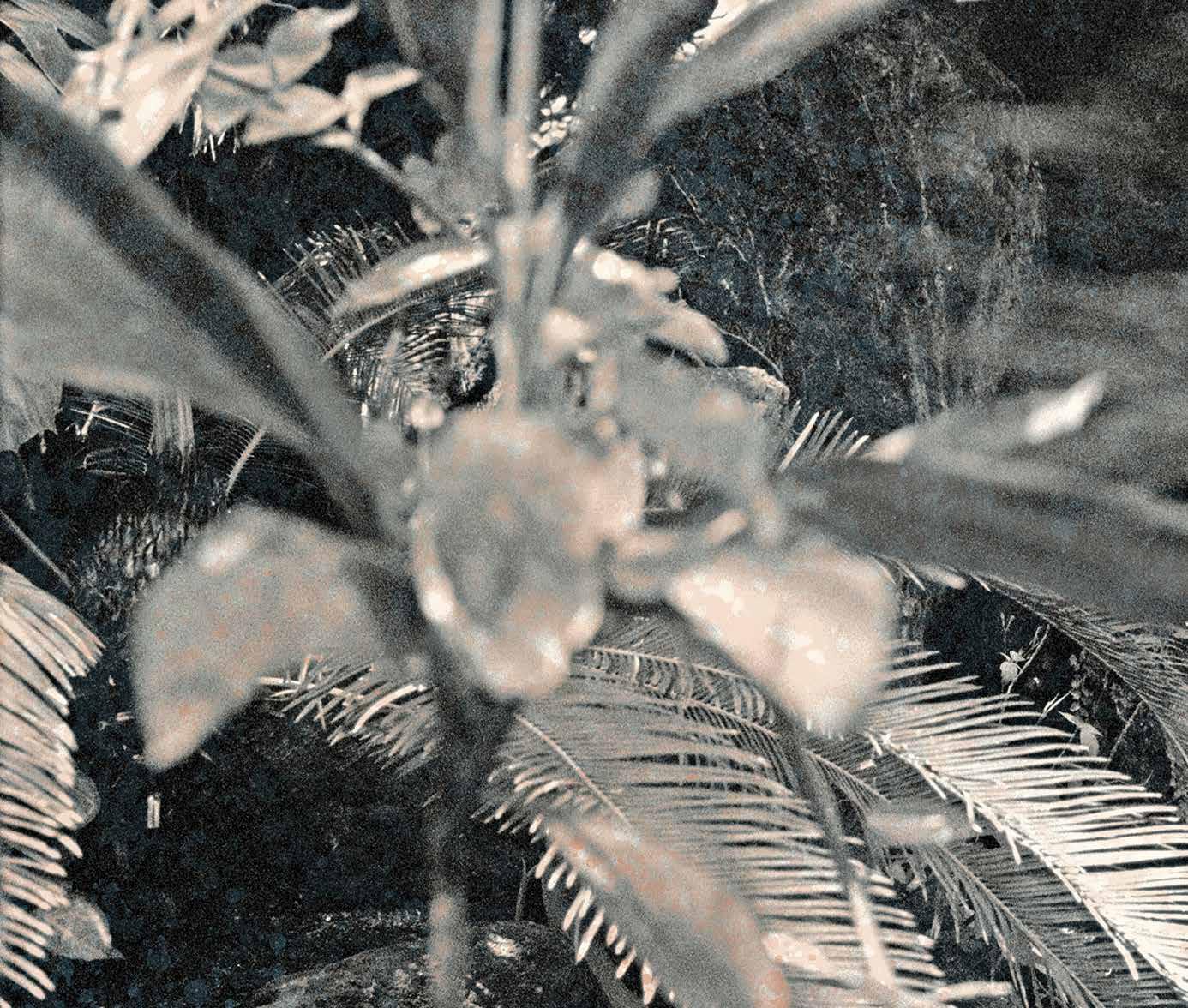
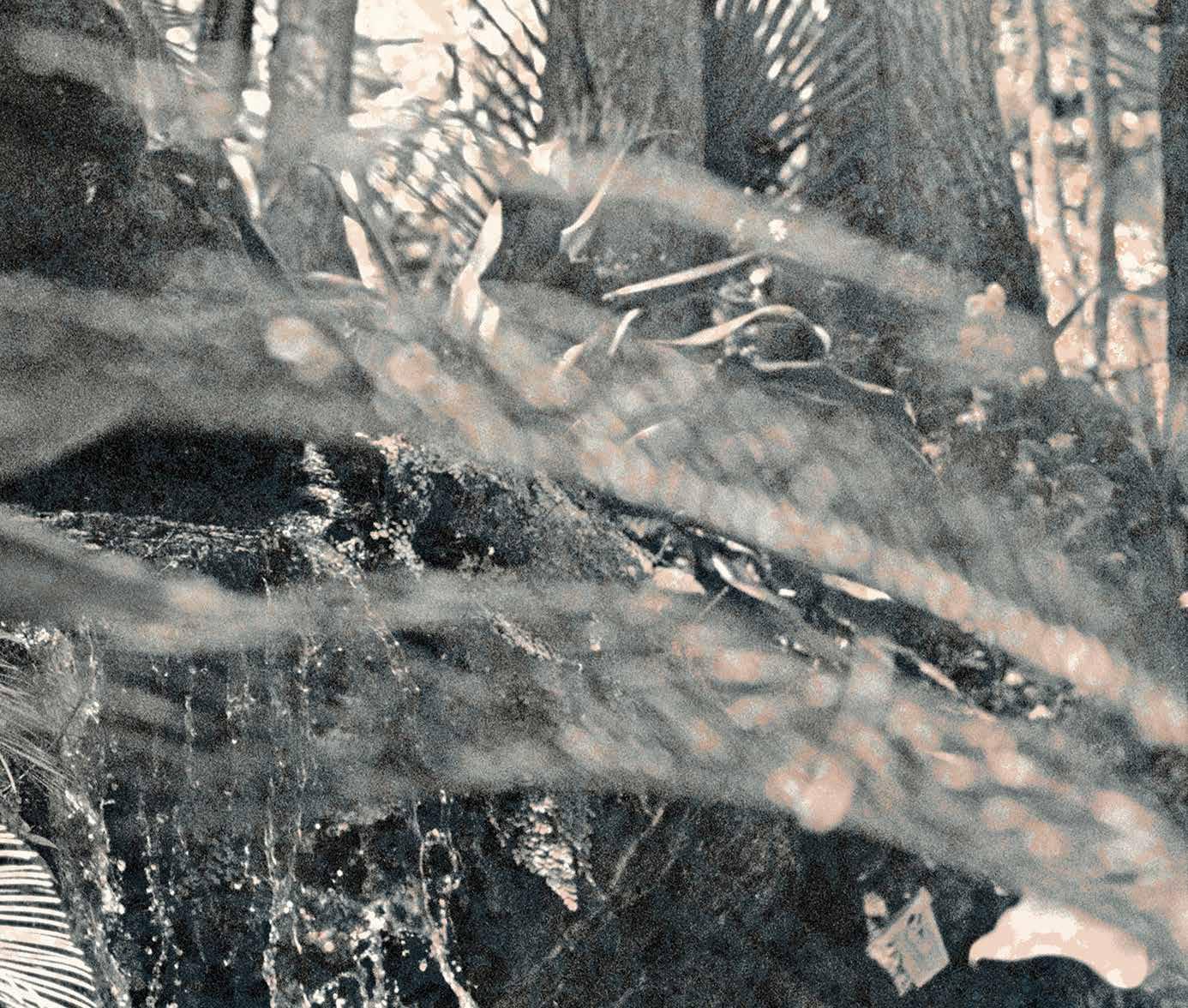


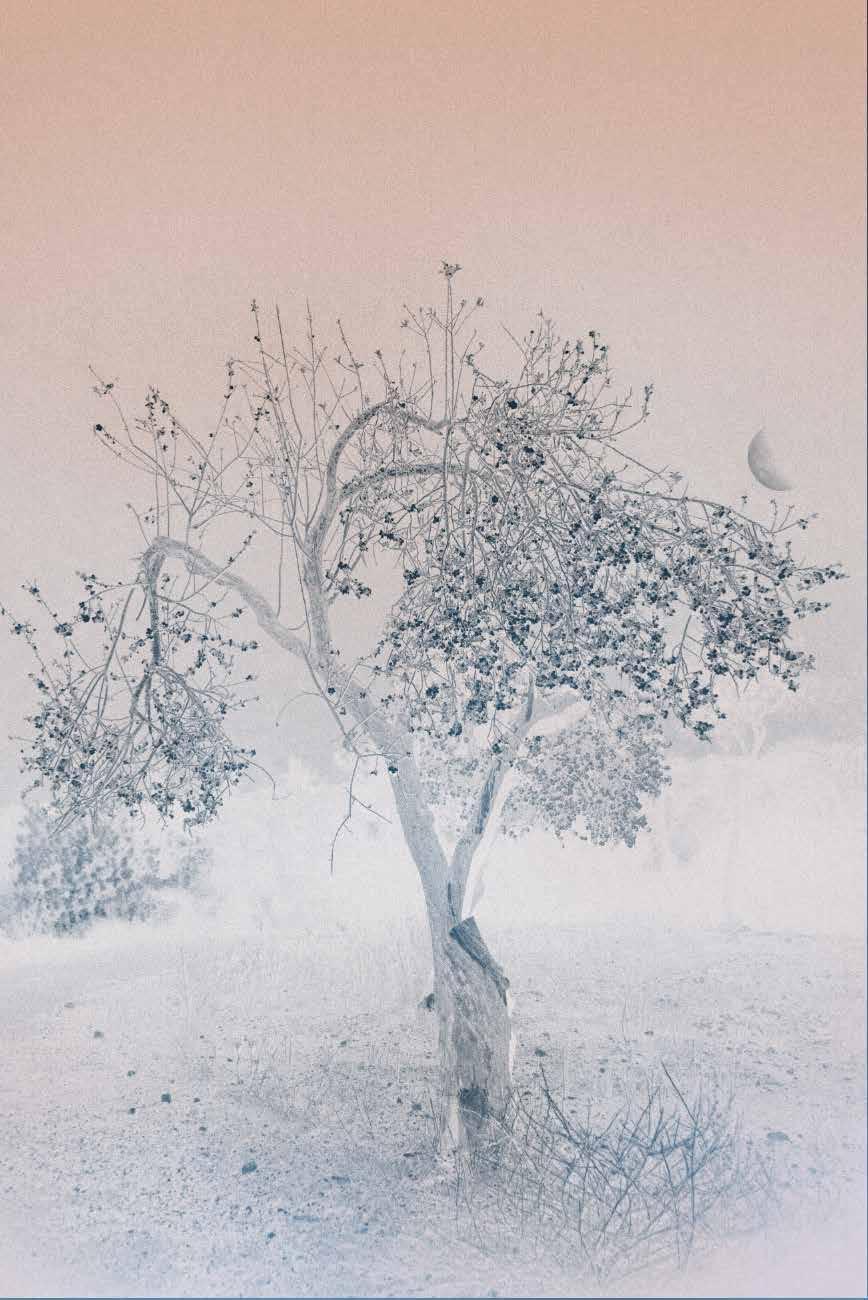
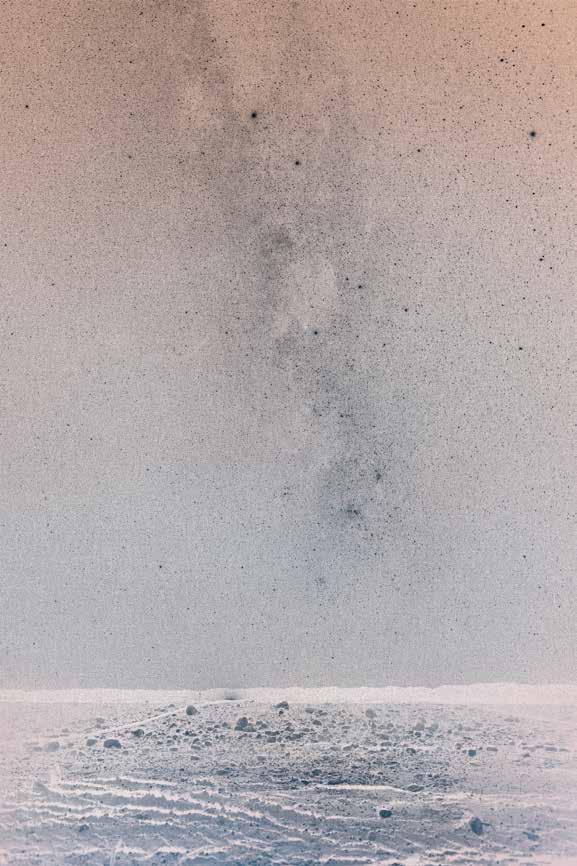
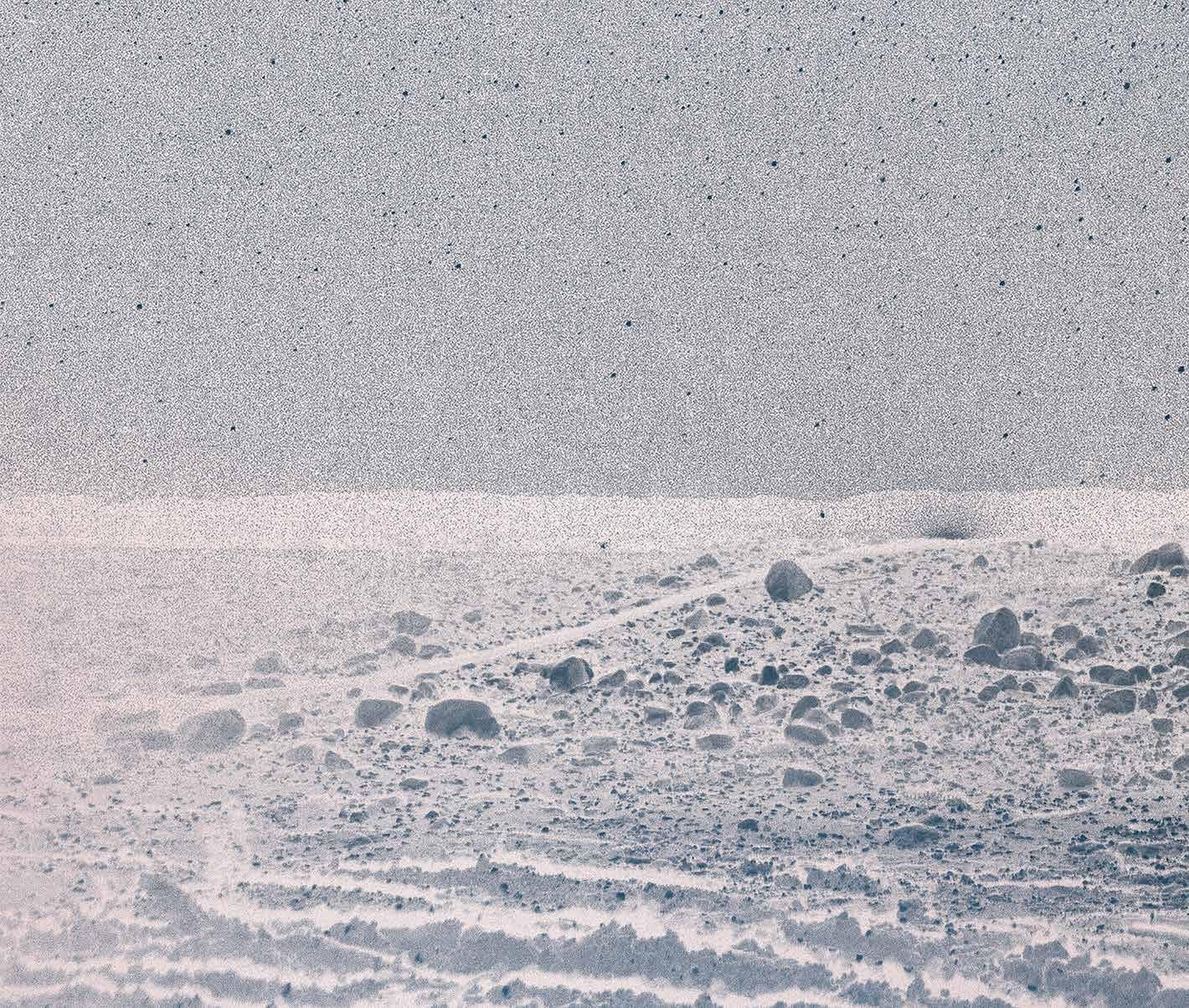
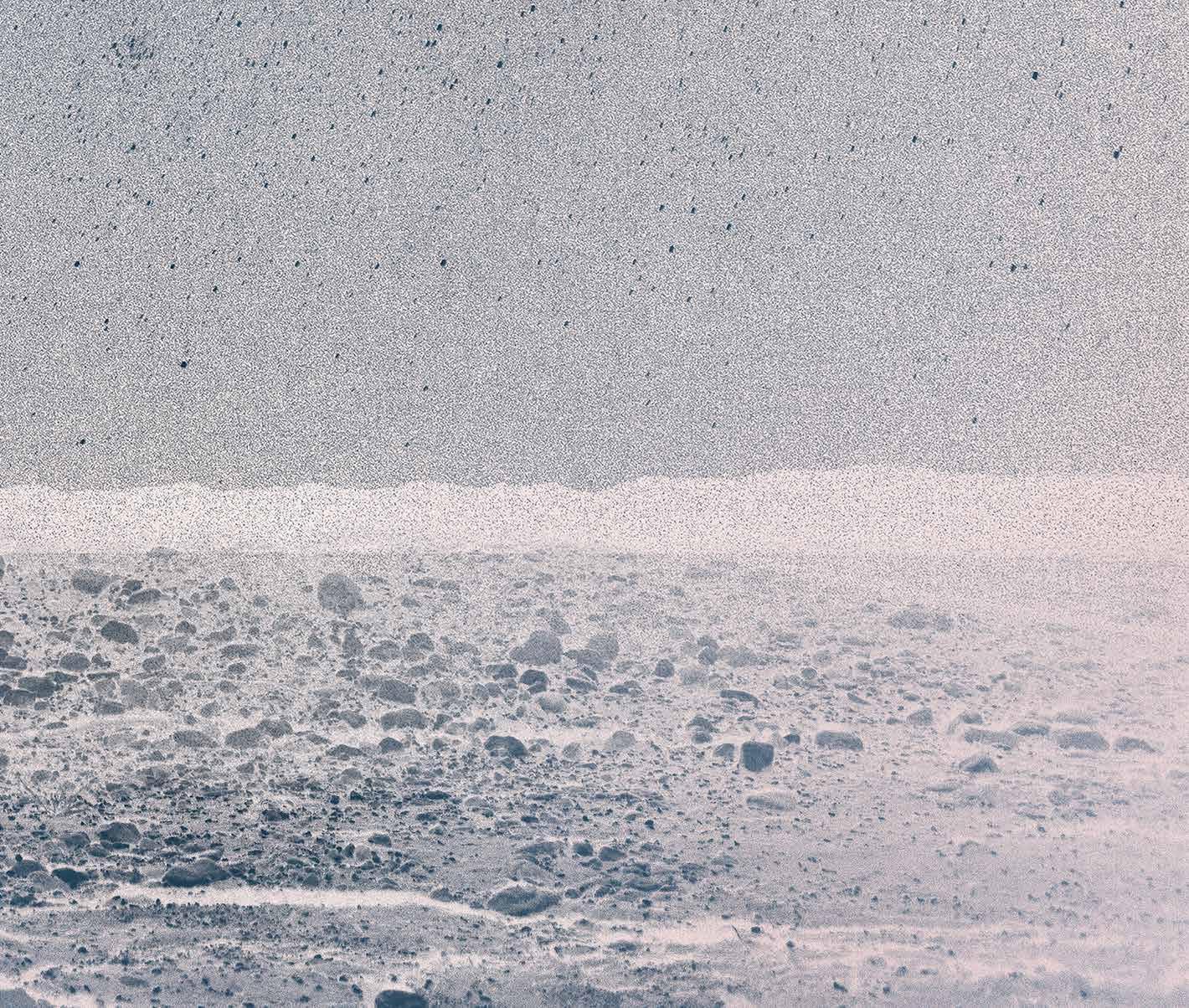

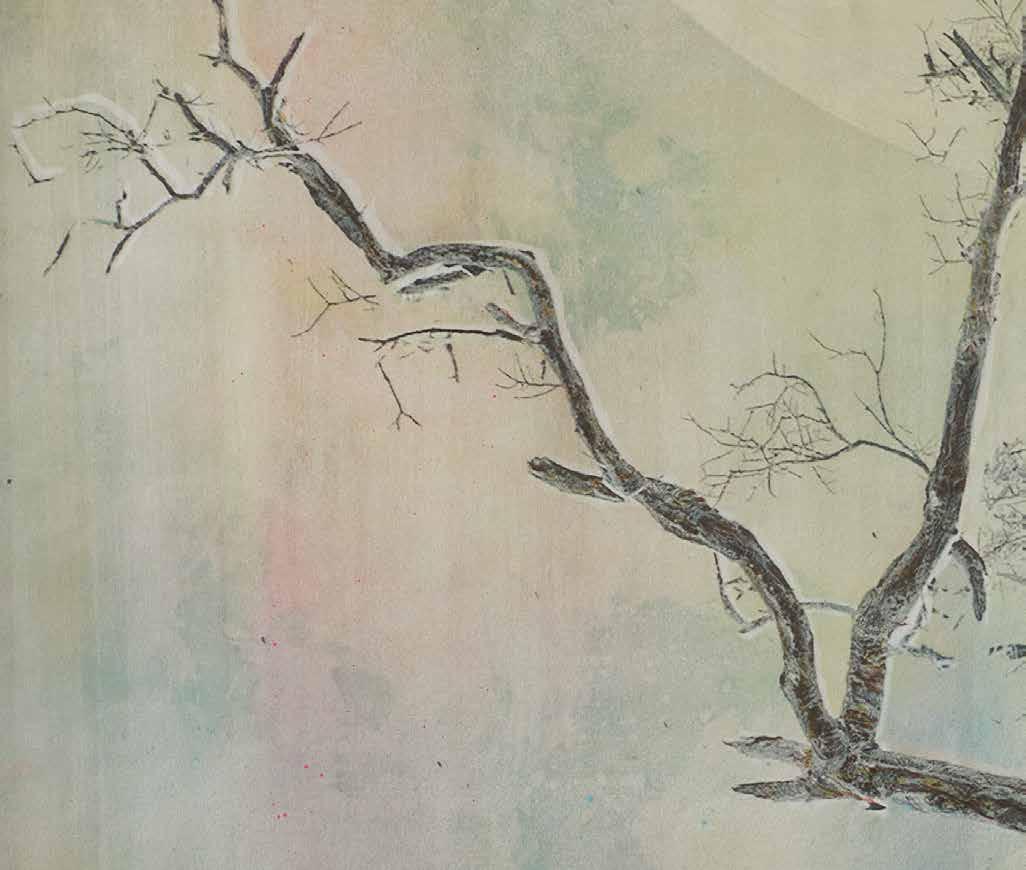
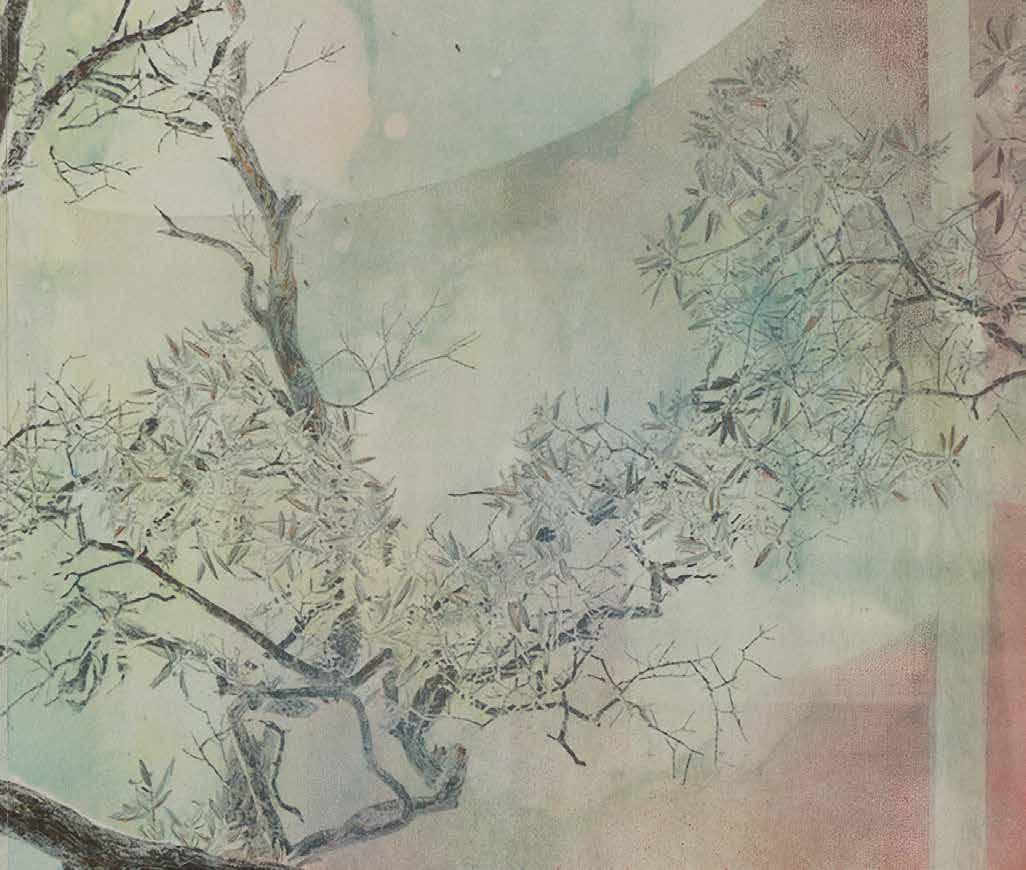



Inquire Gradient Tree, 2022 Ed. 1/3
Pigment print on archival Japanese
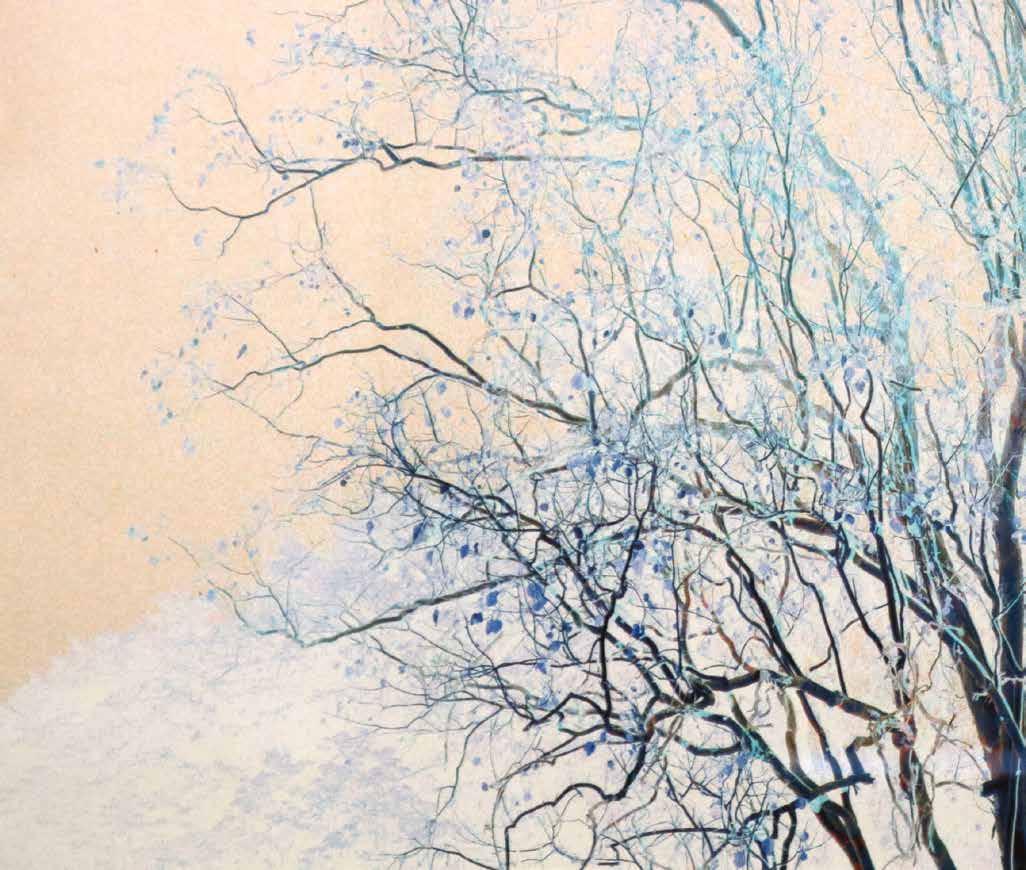
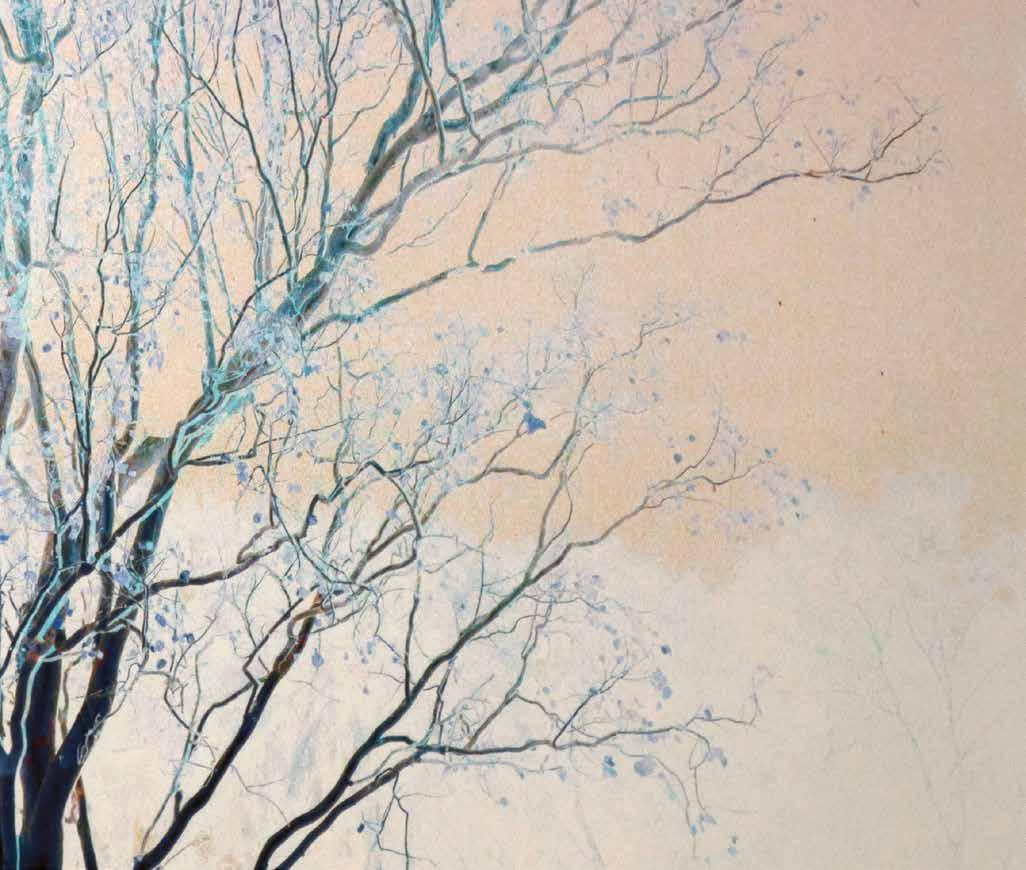
Hadas Glazer: You have been working as a duo for several years now, even from different continents during the pandemic, and specifically on this exhibition for a year. You started as roommates and found mutual interest in representations of nature and the marks of changes occurring over time.
You both graduated from the RCA. Kristina – you majored in print and Itamar – you majored in photography – how does this affect your collaborative work and your work process?
Kristina Chan: It influences a lot of our work. We’re always trying to merge different media. I think each of us, individually, is always trying to push the border of what print or what photography could be. This was one of the major pulls toward this collaboration, we held the same curiosity about these media given the many similarities between print and photography.
Itamar Freed: We enjoy learning new techniques from each other’s worlds. We each bring a different skill set and aesthetic style. It’s the same with ideas, and it’s interesting for us to see how everything collides and what emerges from it.
nature is presented and represented. Kristina is from Canada and grew up in nature. Now, I live in a pretty wild part of Australia, and have moved around a lot throughout my life. It’s the same with Kristina.
KC: There’s a duality in moving away from home and the displacement I’ve experienced. On one hand you’re superexcited to be in a new place and you love that you’re learning new things and yet at the same time you miss home, and you realize you’re not the person you were. In fact, you’re becoming someone new. For me, nature is a metaphor for the displacement. Nature changes. But it’s the how, why and where that makes it interesting and individual. We’ve each changed and transformed so many times and I think Itamar and I found this in each other, in our individual work as well as our collaborative work.
HG: Can you elaborate on your mutual interest in the same topics/motifs explored in your work?
IF: We constantly discover meeting points in our work, in the motifs and themes, especially our interest in the natural world. For me, nature represents what is real. We are both drawn to capturing nature and studying how
HG: While you worked on this exhibition you were in different continents - Itamar in Australia and Kristina in Canada or Britain. You were in different time zones and opposite seasons. Due to the pandemic, you couldn’t meet more than once while you worked on the exhibition. What happened, in the Zoom meetings or when finally met?
IF: It’s pretty incredible to be at this stage, when we are about to open our exhibition, after only spending a few days together in person. Zoom, WhatsApp and Google Slides have been an incredibly important part of this
Hadas Glazer In Conversation with Itamar Freed and Kristina Chanprocess. We spoke regularly - planning, imagining, creating - and we fine-tuned our collaborative process over time.
KC: Throughout it all we were in conversation, sending works back and forth and getting feedback. However, meeting in person was a vital part of the process.
I don’t think it would have been possible without those few days together. It enabled us to build a system and a plan.
I think time zones play a huge role here too. We would catch each other very early in the morning or at the end of the day. We would joke that the works are so dreamlike because we were either trying to wake up or struggle to keep awake.
I think this has contributed to the dreamlike or fantastical aesthetic of the work, from being in this constant state of limbo between night and day, consciousnesses and sleep.
inspirations, discussions and ideas collide together and the first part of the creation happens. From then on the work goes through multiple processes of refinement and development. The works go through a layered process because there are two people involved.
KC: Yes, we discuss it a lot. I remember when Itamar sent me George Stubbs’s Whistlejacket and we had a long chat about why he liked it; or Itamar sent me a documentary on Henri Rousseau. It gave me a lot of insight. I remember sitting down and watching that documentary, and discovering that Rousseau had never been to the jungles he paints, and the work came alive for me. Maybe it was the same for Itamar with William Kentridge or some of the printers I admire. What’s so special about this collaboration is how we merge our inspirations.
Nature and culture are different and diverse in different parts of the world. Both of you are influenced by the surrounding nature, by places where people present or create their own version of nature -- zoos or botanical gardens – and by the history of Japanese and European art. We talked about Henri Rousseau, George Stubbs, Hokusai, Kawase, and Kentridge. How do you take all these influences, references and ideas, and merge them into a joint artwork?
IF: We understand and naturally discover a direction through conversation. We know the sorts of objects we want to research, the sort of images we want to create, the sort of feelings we want to communicate and then all our
IF: I agree, you have to learn each other’s sources of inspiration. When we do, it feels natural to put it together. We have now been collaborating for a few years and we’ve really started to understand each other. We know and understand each other’s life more and more. That’s very important because it’s where we make art from, it’s how we find an image, how we frame an image, what we’re looking for and at. I also believe our collaborative practice is part of wanting to contribute to this tradition in art, the meeting place of print and photography.
HG: There was an interesting development during the work process. At some point we decided to include William Morris’s monumental glass sculpture “Man and Beast” in the exhibition. I think it was a breakthrough because it changed your “natural” course of working. You started learning about the quality of glass and discovered it has many connections to photography. How did the sculpture influence your work and the entire vision of the exhibition? What is the connection you see between Man and Beast and your work? In terms of theme, technique, and appearance? Eventually, it seems to have led to 3 works: Two Horses, Wild Almond and Peacock, which entwine fascinating techniques that resemble ancient photography with print techniques that create a play of light, brilliancy and color opacity. How do you see it affected your approach to the photographic matter? To the sheet of paper?
KC: From a print perspective, it was really interesting to me because it immediately evoked the idea of stained glass, which is transparent. Light is such an important factor in print and photography, it felt like an immediate connection. Layering through monoprinting and lithography is different from painting. It’s completely translucent. Every color can be seen through the next. For me that related to glass in a way I hadn’t previously thought of. From there we kept finding connections. Early photography, such as wet collodion, used glass plates and negatives. There is a direct material and historical tie between the processes.
IF: In connection to William Morris and the title of his work Man and Beast, we began thinking about the role of horses throughout history. Horses carry humans, the beast carries people across countries, hunting, agriculture, war, in competition, to police/control men, men break in a horse, a horse as mythical creature. We began thinking about the horse as a being and what it represents. You cannot separate it from the history of humans. So for good and bad there’s a strong connection. Horses, I believe, don’t have bad intentions, they do whatever they’re told. There’s a strong relationship between horses and people, between humans and nature. That’s part of what we have been researching through this exhibition, the relationship between humans and nature and what it symbolizes.
KC: We speak a lot about the preservation of nature, or nature as artefact in our work. This is where the connection with Man and Beast really shines through for me. With William Morris’s piece you are immersed in this moment of unearthing an excavation that questions time. Our work explores this displacement as well. We tried to make 2 Horses resemble a daguerreotype, patinated as if tarnished, made to look older than it is. The horses are a still life. There is a narrative but the audience is left asking from when and about what. William Morris’s piece has a similar feeling of being “unearthed” or discovered, and yet you’re unsure if it is from the past or the distant future.
HG: The works’ digital processing aims to speak for cycles of nature, such as day and night and seasonal changes. The images create a calm atmosphere, but there’s a strong notion of disruption of what the eye perceives: nocturnal photography processed into a negative (Tigers), colors are added (Gradient Tree), astronomical objects appear (TBC) and they all create impossible images of nature, but they still manage to hold the calming, and yet powerful quality of traditional nature photography. What order (perhaps political) are you trying to create?
KC: The works always begin from real spaces but are then altered and merged with others, all from our own experiences and memories. After all, this is how memory works, it all blends together and reality fictionalizes. When you first look at a work it is often simple: a tree, a tiger, etc. but we are confronted with many associations, societal, natural, and geographic that we can’t escape. It’s also very poetic and cultural. Many cultures have symbols, myths and metaphors about trees. They represent steadiness, wisdom, time, etc. There are also many ecological references: deforestation, new growth, rewilding. These are endless, and very individual.
opposed to what it actually is. You offer another angle - one that is more mystic perhaps, that questions and tries to index the energetic essence of the object’s photograph.
KC: We are part of the history of art, with the photographic and print processes that have their beginnings in exploration, discovery, chemistry, botany and narrative. It’s amazing to be able to draw from and respond to these techniques and experiments, to create works that explore the relationship between collective and individual experience. Perhaps this is where the sense of mysticism comes from.
HG: Your artistic practice maintains a clear dialogue with photography history – from Talbut’s Pencil of Nature through daguerreotypes and up to Jeff Wall’s huge, staged snapshots. They all deal with questions of representation, with what’s revealed to our eyes as
IF: Perhaps the mystic feeling derives partly from the absence of people in the images. I feel the human presence within the works without actually seeing people portrayed, without figurative images This strongly emphasizes the human presence, human perspective, sense of time and memory. The human gaze becomes amplified. The gaze is one of wonder and curiosity, of looking back to learn more, of seeing the unfamiliar in the familiar, maybe even of looking to the future. We question our gaze in relation to what humanity views as beautiful, important or interesting. Why is the cherry blossom celebrated around the world and not the almond tree which to us is equally beautiful. We created our own mysticism around it.
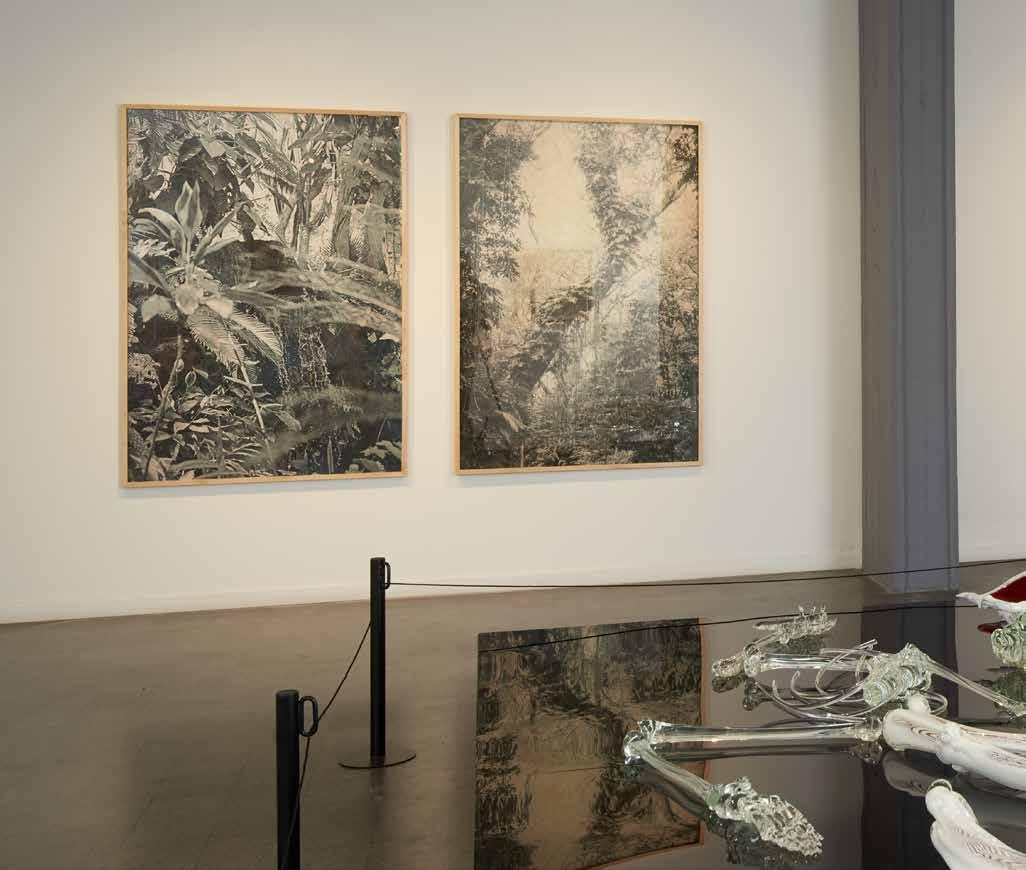

William Morris was born in California in 1957. Morris was educated at California State University as well as Central Washington University, Washington. In 1978, Morris arrived at the Pilchuck Glass School and found work initially as a driver. Later, he worked with Dale Chihuly, the founder of the school, and eventually became his chief gaffer in the 1980s. Morris remained with Chihuly for about 10 years before deciding to form his own studio and develop his own artistic style of glass blowing.
For more than twenty-five years, William Morris has captivated and intrigued the art community with hauntingly evocative and beautiful glass sculptures. Creating objects that appear to be ancient stone or woodcarvings. His art speaks of human origins, myth, ancestry, and ancient civilizations. It symbolizes a harmony between humanity and nature and provides a ghost-like bond to the world around us.
beg us to explore them further. Morris achieved much success during his career and retired in 2007.
Morris’ work can be found in numerous public collections including: The Metropolitan Museum of Art, New York, NY; Corning Museum of Glass, Corning, NY; American Glass Museum, Millville, NJ; Hokkaido Museum of Modern Art, Hokkaido, Japan; Musee Des Arts Decoratifs, Paris, France; Auckland Museum, Auckland, New Zealand and the Victoria and Albert Museum, London, England.
Morris gathers much of his inspiration from ancient cultures from around the world – Egyptian, Asian, Native American – all peoples who respected and admired the land they inhabited. Because of this, Morris’s artwork has become something all its own: culturally distinct and yet familiar to all cultures. His pieces embody a spiritual quality that sharply contrasts old beliefs with those of the modern world. These objects speak to our senses and continuously
Among the many awards he has received are the 2007 Fellow of the American Craft Council, The American Craft Council College of Fellows, New York, NY ;Aileen Osborn Webb Award, The American Craft Council, New York, NY ; 2005 Master of the Medium Award, James Renwick Alliance, Washington, DC Jurors Award; 2002 Artist as Hero Award, National Liberty Museum, Philadelphia, PA ; 2001 Visionaries Award, American Craft Museum, New York, NY; 1997 Outstanding Achievement in Glass, Urban Glass Third Annual Awards Dinner, New York, NY; Distinguished Alumni Award, California State University, Chico, CA ; Featured Artist, Chateau Ste. Michelle Winery, Artists Series ; 1994 National Endowment for the Arts, Individual Artist Grant.
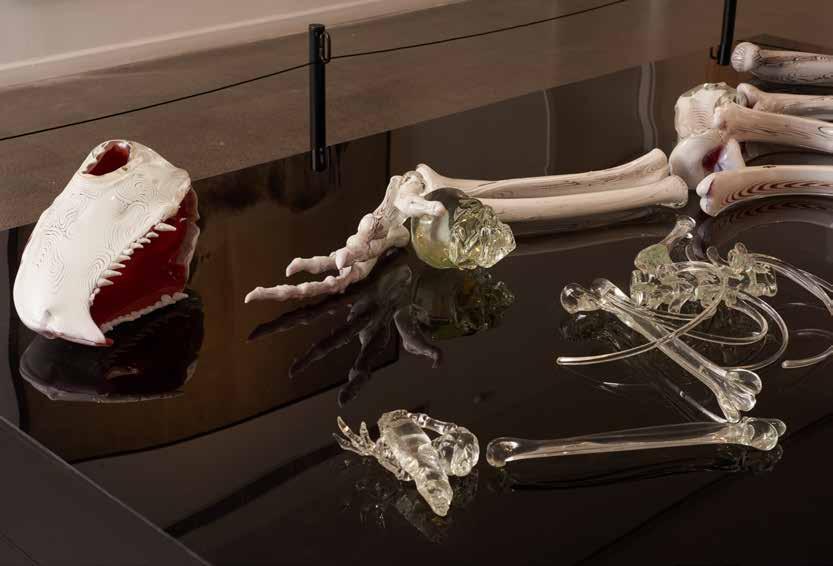
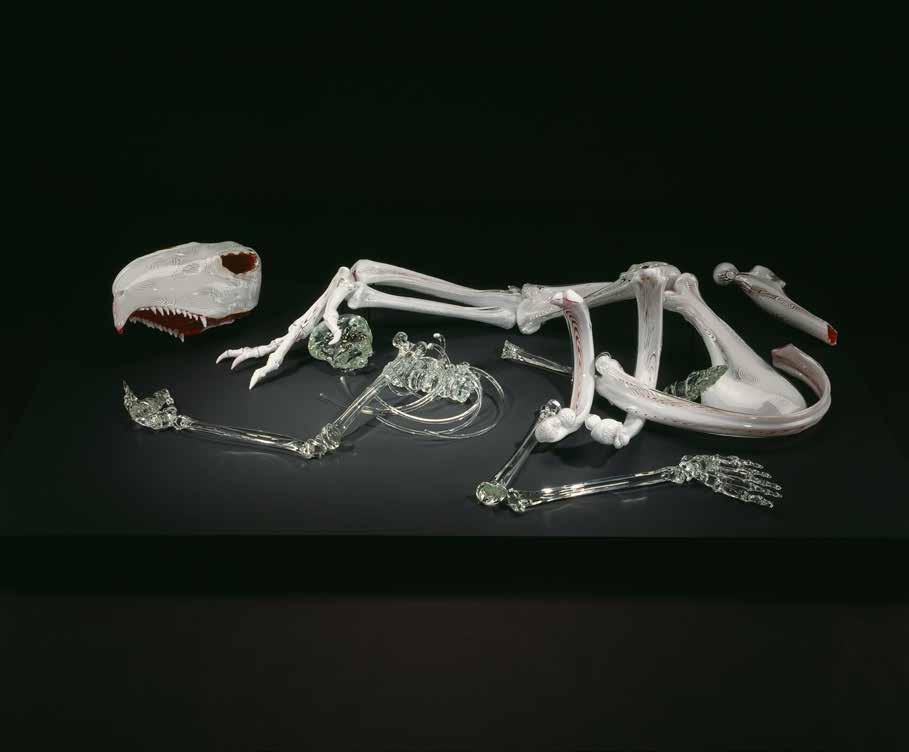
Man and Beast, 1988 Glass


